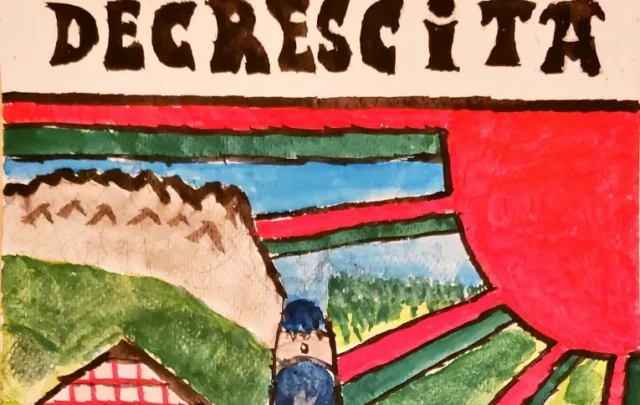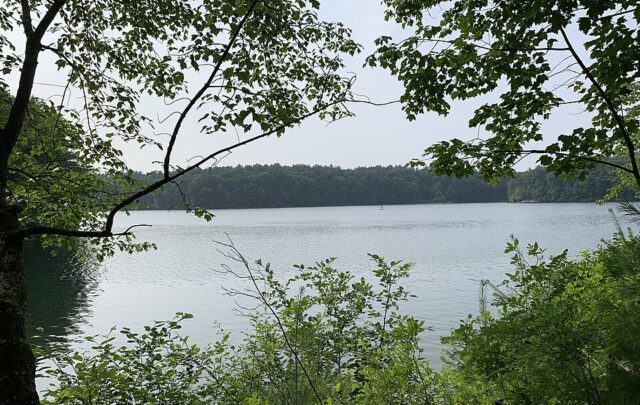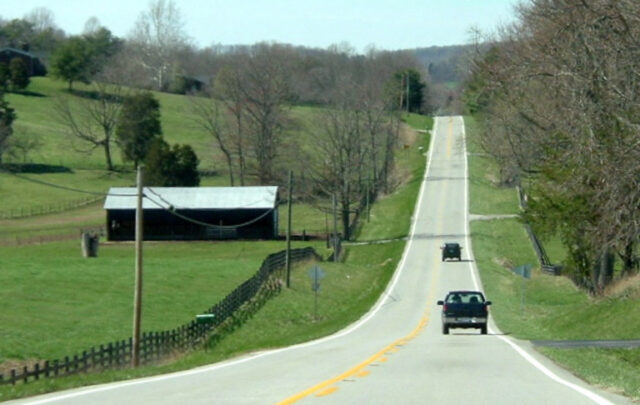Click on the headline (link) for the full text.
Many more articles are available through the Energy Bulletin homepage
No-Walking Blues
Clark Williams-Derry, Sightline
… before I single out “sprawl” as being uniquely hazardous to mental health, I’m going to want a lot more evidence than a handful of anecdotes.
Well, some evidence just landed in my inbox:
Living in a pedestrian-friendly neighborhood may help shield older men from depression, a new study suggests.
Researchers found that among 740 older adults living in the Seattle area, men who lived in more walkable neighborhoods tended to show fewer depression symptoms than men from less walker-friendly areas.
The gist: older men who live in a walkable neighborhood get more exercise, which helps protect against depression. But increased walking, by itself, didn’t explain all of the mental health benefits of living in a walkable neighborhood. After controlling for the amount of walking, residents of walkable neighborhoods still had an edge in warding off the blues. To the researchers, this suggested that a neighborhood that allows for safe and convenient walking — and offers nearby destinations that are worth walking to — fosters a sense of community, which in turn prevents isolation and depression.
I still don’t think the results here are conclusive, and I’m sure there will be followup studies from other parts of the country. But it’s interesting to think that a good neighborhood can be like a good friend: it can keep you from feeling lonely.
(X May 2007)
The article cited by Clark is Neighborhoods may impact male depression (Reuters via MSNBC).
The Wheel World: Cascadia (Bicycle Neglect #3)
Alan Durning , Sightline
…Cascadia is the North American leader in cycling. British Columbia has the highest bike commuting rates in Canada; Oregon has the highest in the United States. Every other Northwest state is above the national average.
…Cycling is not evenly distributed across metro areas, of course. It’s heavily concentrated in complete, compact neighborhoods that are close to the urban core. Small, campus-dominated cities like Eugene and Corvallis are therefore naturals for cycling. So are the historic, street-car neighborhoods that anchor the Northwest’s big cities: draw a circle with a four-mile radius around the downtown of any Cascadian city and you’ll usually capture not only its most compact neighborhoods but also a large share of its bike commuters.
…In bicycle road racing, you don’t win unless you stay up with the pack – the peloton – because of the aerodynamic advantage of tight formations. If you fall behind, you’ll probably never catch up.
What’s Cascadia’s standing, in the race for bicycle-friendly urban transportation-transportation that’s affordable, equitable, energy efficient, and climate safe? Well, the region is the North American leader in bicycling; we set the pace for the peloton. Bicycling has never been more prevalent in Cascadia than it is today, and it’s steadily gaining in many Northwest cities.
But pull the camera back until you can see the whole race route. You’ll see that the peloton we’re pacing in North America is not the main one. The real contenders are in northern Europe, and they’re pulling away from us. We’re the leaders of the laggards.
Fortunately, building complete, compact communities isn’t a winner-take-all sport. Leading the trailers is still good. It means that Cascadia is seizing more of the rewards of cycle-friendly communities-from lively streets to energy independence, from narrowed waistlines to widened access to affordable transportation. The expanding lead of the European peloton is, however, a bracing reminder to do more, to speed ahead toward the end of Bicycle Neglect.
(4 May 2007)
Spain balks at corrupt urbanization
Lisa Abend, Christian Science Monitor
Thousands protested urban development this weekend as concern over corruption and environmental degredation rises.
—-
…In a country where economic prosperity has long rested on the construction industry, Spaniards have for decades watched as their once pristine beaches and mountains have been dotted with mega resorts and vacation homes. But spurred in part by a massive crackdown on real estate corruption last year – one that is still playing out – a growing number of citizens are concerned by Spain’s urbanization. And with local elections just three weeks away, the ranks of environmentalists are swelling.
“The surprising thing isn’t that the environmental movement is growing,” says Jesús García, the Green Party mayoral candidate in Granada. “What’s surprising is how much we’re spreading into sectors that aren’t normally ecology-minded.”
In March, 50,000 people took to the streets of Mallorca to protest the island’s “unsustainable” development. In April, courts in the province of Cantabria ordered construction stopped on a housing development after a citizens’ group complained that the developer had illegally defaced a rural area. And tens of thousands protested Saturday in nearly a dozen cities .
(7 May 2007)





